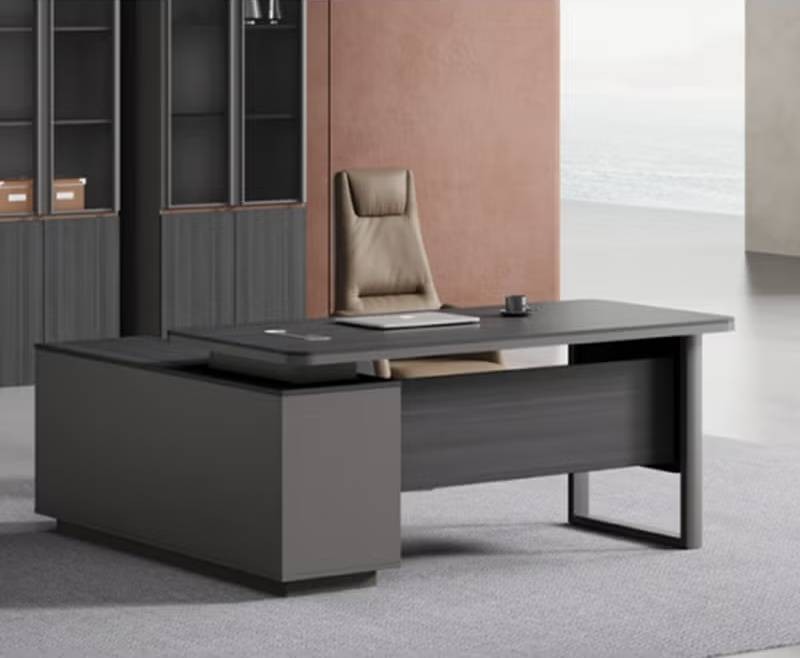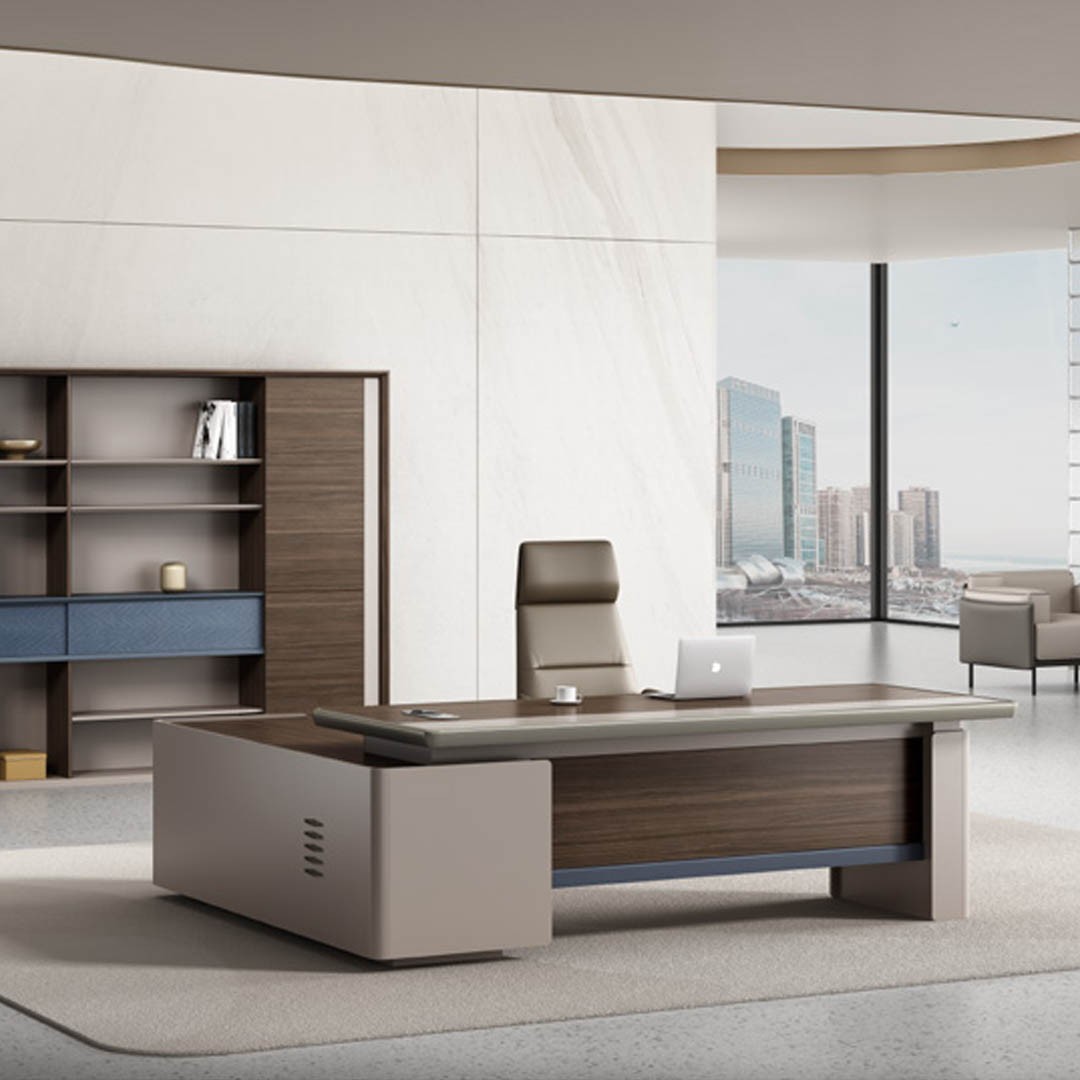
The Best Office Desks for Architects and Designers
Introduction
When it comes to designing the ideal workspace for architects and designers, choosing the right office desk is essential. These professionals need a workspace that supports creativity, enhances productivity, and accommodates all their tools, from drafting equipment to computers. A well-designed desk can make a significant difference in how comfortably and efficiently you work.
In this article, we’ll explore the best office desks for architects and designers, highlighting key features that make them perfect for these roles. Whether you’re working on detailed drawings, architectural plans, or 3D designs, having the right desk can elevate your work experience.
1. Ample Workspace for Drafting and Design Work
Architects and designers need large, spacious desks that can accommodate blueprints, design layouts, and digital tools. A desk with a broad surface area allows you to spread out your work and keep materials organized. When choosing a desk, look for one that offers sufficient space for drawing, writing, and computer work, while also ensuring that you have room to store your materials.
Key Features to Look For:
-
A large surface area to accommodate design tools and documents.
-
A smooth, flat workspace ideal for drawing and drafting.
-
Enough space for multiple monitors or design software.
Recommended Products:

-
Ziyo Series L-Shape Luxury Office Desk
This spacious L-shaped desk provides ample workspace for architects and designers, offering room for drafting and multiple projects at once.
-
Siboon Series Ace L-Shape Executive Office Desk
A versatile L-shaped desk, perfect for organizing large projects and working efficiently on multiple tasks.
2. Sturdy Construction for Long Hours of Work
Architects and designers often spend long hours at their desks, so it’s crucial to invest in a sturdy and durable desk. Look for desks made from high-quality materials like solid wood, steel, or heavy-duty metal to ensure that the desk will support the weight of your equipment and withstand wear and tear over time.
Key Features to Look For:
-
High-quality materials that ensure durability.
-
Solid construction that can hold heavy equipment and multiple items.
-
A stable surface that doesn’t wobble during intense work sessions.
3. Adjustable Features for Comfort and Ergonomics
Comfort is critical for architects and designers who spend extended periods working at their desks. A desk that can be adjusted to suit your specific needs, such as height or angle, can promote better posture and reduce strain. Look for desks with adjustable features like height or tilt to ensure a comfortable and ergonomic workspace.
Key Features to Look For:
-
Height-adjustable desks to promote better posture.
-
Desks with tilting surfaces to adjust the angle for easier drawing or working with materials.
-
Ergonomic designs that support your physical well-being during long work sessions.
4. Integrated Storage Solutions
Keeping your workspace organized is key to maintaining productivity and reducing distractions. Architects and designers need easy access to their tools, documents, and materials. Look for desks with built-in storage, such as drawers, shelves, and compartments, to keep your workspace clutter-free and organized.
Key Features to Look For:
-
Drawers for storing office supplies and documents.
-
Shelving options to keep books, files, and design tools within reach.
-
Cable management solutions to organize wires and electronics.
5. Aesthetic Design to Inspire Creativity
As a designer or architect, your workspace should reflect your creativity and help inspire new ideas. Choose a desk with an aesthetic design that suits your style while creating a professional and motivating environment. A desk with clean lines, sleek finishes, and a modern look can elevate the overall feel of your workspace.
Key Features to Look For:
-
A stylish, modern design that complements the aesthetic of your office.
-
Sleek finishes, such as wood veneer or metal accents, to add a professional touch.
-
A design that promotes a calm, focused atmosphere conducive to creativity.
6. Multi-Functional Features for Versatility
Architects and designers need a versatile desk that can accommodate both creative and technical work. Desks with multi-functional features, such as additional workstations, filing cabinets, or even built-in drawing boards, offer flexibility and adaptability for various tasks.
Key Features to Look For:
-
Multi-functional desks with different workstations.
-
Built-in drawing boards or tiltable surfaces for drafting.
-
Extra workspace for technology and digital design equipment.
7. Space for Technology and Gadgets
Designers and architects rely heavily on technology, so it’s essential to have a desk that can accommodate their electronic devices. Look for desks with plenty of space for multiple monitors, a computer tower, printers, and other tech equipment. Some desks come with built-in charging stations or cable management solutions to keep your tech organized and accessible.
Key Features to Look For:
-
Sufficient surface area to hold multiple monitors or digital devices.
-
Cable management features to keep cords organized and out of sight.
-
Built-in outlets or charging stations for easy access to power.
8. Flexible Layouts for Collaborative Work
In many architectural and design firms, collaboration is essential. Choose a desk that supports teamwork by offering flexible layouts. Desks with modular designs or collaborative workstations allow for easier group discussions and collaboration. L-shaped desks can also be ideal for shared spaces or when collaborating on projects with colleagues.
Key Features to Look For:
-
Modular designs that allow for easy customization and expansion.
-
Large surfaces for collaborative work and group discussions.
-
Desk arrangements that encourage teamwork and communication.
9. Easy to Maintain and Clean
Given the nature of architectural and design work, your desk may become cluttered with materials, tools, and even dust. Look for a desk that is easy to clean and maintain, with smooth surfaces that can be wiped down quickly. Materials like laminate or treated wood are particularly useful for their low-maintenance properties.
Key Features to Look For:
-
Smooth, wipeable surfaces for easy maintenance.
-
Stain-resistant materials for long-term durability.
-
Minimal design elements that make cleaning simpler.
10. Sustainable and Environmentally Friendly Materials
More architects and designers are choosing environmentally friendly options when outfitting their offices. Look for desks made from sustainable materials, such as reclaimed wood, eco-friendly finishes, and non-toxic paints. These desks not only contribute to a healthier workspace but also align with sustainable design principles.
Key Features to Look For:
-
Desks made from sustainable materials like reclaimed wood or bamboo.
-
Non-toxic finishes and paints for a healthier environment.
-
Environmentally conscious manufacturing processes.
Final Thoughts
The best office desks for architects and designers offer a combination of functionality, comfort, and style. By choosing desks like the Ziyo Series L-Shape Luxury Office Desk or the Siboon Series Ace L-Shape Executive Office Desk, you can create a workspace that supports creativity, efficiency, and organization. Whether you need ample surface space, ergonomic features, or integrated storage, the right desk can make a significant difference in how you work.
FAQ
What is the ideal desk size for architects and designers?
The ideal desk size for architects and designers should provide ample surface area to accommodate drawings, multiple monitors, and various design tools. L-shaped desks are great for maximizing workspace.Do I need a height-adjustable desk as an architect or designer?
Yes, a height-adjustable desk promotes better posture and comfort, especially when working long hours. It allows you to alternate between sitting and standing to reduce strain.Can a desk with storage help keep my workspace organized?
Absolutely. Desks with built-in storage, such as drawers and shelves, help keep office supplies, documents, and tools organized and easily accessible, reducing clutter.How do I choose a desk that supports collaboration?
Look for desks with a flexible layout or modular design, such as L-shaped desks, that provide ample space for teamwork and collaboration on projects.


